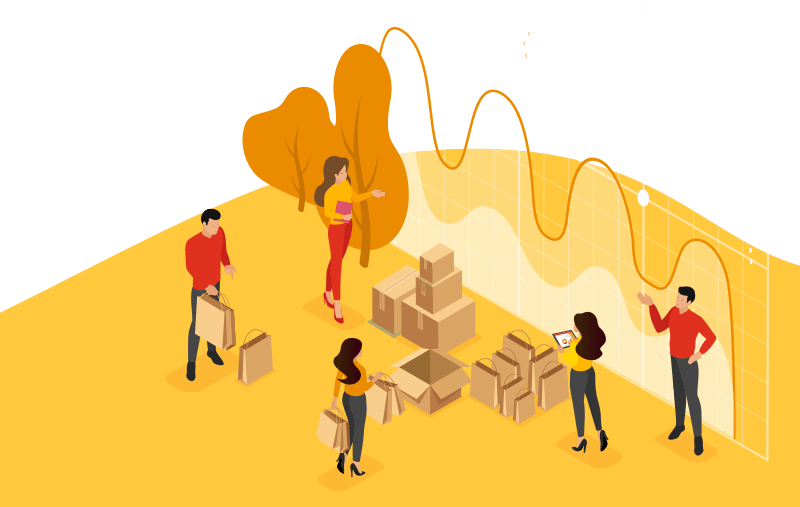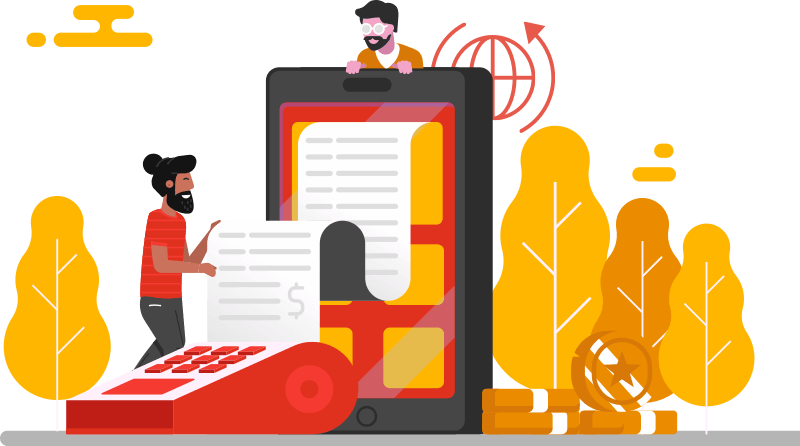The plight of procurement today
Procurement is a vital value driving function in any organization. However, traditionally, the procurement process has been inefficient, non-transparent, non-integrated and non-strategic. Procurement officers spend most of their time manually managing approvals and invoices and parts of the value chain still operate manually. For e.g. a part of an automotive manufacturer’s supply chain can be providing procurement officers with insights into the state of vehicles, inventory levels, and the location of in-process orders, while other parts would be operated by paper order forms, phone calls between businesses, and outdated email communications.
Globally, factors such as developments in digitization, innovation and competition, highlight the need to change how procurement is treated within an organisation from a digital and capability perspective. Additionally, the combination of industry 4.0 technologies such as big data analytics, Internet of Things (IoT) and Artificial Intelligence (AI) is revolutionizing the way companies operate, giving birth to the concept of “Procurement 4.0”. As IoT technology and AI capability make better use of data collected by devices, platforms will be able to synthesize information into real-time insights thus bypassing old, unreliable, inefficient means of sharing information and acting.

Hence, a shift from a traditional procurement model into a Procurement 4.0 ecosystem unleashes many advantages such as cost reduction and transparency of processes along the supply chain and achieving cross-functional synergies. To achieve this transition, organisations will need to develop new value propositions, meet new business needs, integrate data across the value chain, introduce digital tools and processes and extract insights from the intelligent use of data. The journey to Procurement 4.0 is characterized by enablers that will help procurement drive innovation from within the enterprise and the real-time management of a linked supply chain.
1. eProcurement platforms
Many organisations don’t have a clear picture on ‘what’ they are buying across all categories of spend, from ‘whom’ they are buying and ‘how’ much they are spending. To resolve this issue, an eProcurement platform will help increase spend visibility across the value chain and increase efficiency in spending because it centralizes tracking, thereby helping leverage volume and lower costs. Some of the top benefits include:
2. Data analytics
Data analytics, with the help of diagnostic, prescriptive and predictive analysis helps to identify patterns in contracts, buying patterns, payment options, predict disruptions in supply chain and optimize existing value streams. Smart algorithms llow large volumes of data from heterogeneous sources to be aggregated, processed, and analyzed. The resulting analyses can be used to understand suppliers and customers, predict market trends, and investigate machine and product failures. For example, if a critical component reaches the minimum value in the warehouse, a Robotic Process Automation or RPA engine can automatically issue a purchase order to the supplier based on predefined rules.


3. Digital Supply Chain Management Systems
Digital Supply-Chain Management (SCM) systems enable the real-time coordination of stakeholders in a value chain. Through cloud-based SCM systems to achieve 100% On Time In Full (OTIF) and reduce inventory. OTIF, a key supply chain KPI, measures whether the supply chain was able to deliver: the expected product in the quantity ordered by the customer at the place agreed by the customer at the time expected by the customer.
After a company has successfully implemented data analytic capabilities into their procurement process, officers will be able to extract insights on customer, financial, and external data — from weather all the way to credit ratings — and predict changes in supplier risk ratings. They will have the additional option of feeding changes in credit ratings automatically into the supplier risk management system.
4. People’s Capabilities
In the journey to Procurement 4.0 organisations will need to “rethink” their talent’s capabilities. Companies will need to create new job profiles such as buyers of new categories of items, contract experts, intellectual property experts, data scientists and more. To find this talent, new sources must be unlocked with the help of procurement cooperation partners such as university partnership programs and research centers, along with social networks, social media, and “boomerang rehires” — top-performing employees rehired after a few years’ absence. Larger companies should consider establishing their own procurement academies to conduct Webinars, cross-functional training, and supplier workshops. Only if procurement personnel are digitally capable can a company fully benefit from the opportunities provided through digitalization.


Advancements in the region towards Procurement 4.0
The region is seeing a slow but steady move towards digital procurement with governments bodies mandating the implementation of digital platforms etc. These ambitions set the tone for companies to move towards Procurement 4.0 solutions.
One such example is a government body in the UAE that has digitized transactions and the use of paper documents by accepting ePayments and digital invoicing as part of the UAE’s “Smart Government” initiative to become a fully paperless government by 2021. Under this initiative, suppliers can bid for government and federal tenders electronically, they can follow up on purchase orders and submit digital invoices. Additionally, the eProcurement system allows for the automation of the entire purchase cycle from the bid stage to the completion of the fee payment process.
In line with the regional growth of digitization efforts and needs in procurement, there is an increasingly growing number of international platforms setting up offices in the region. These companies offer innovative solutions to the clients from payments to app based third party modules in their platform. This gives an opportunity to the ME clients to streamline their procurement process, make it more transparent and take data driven decisions.
What’s next?
Given the extreme complexity and endemic fragmentation of supply chains, making a rapid shift to Procurement 4.0 isn’t easy. Instead, businesses will need to work with and exert leverage on their partners in the supply chain to achieve the end-to-end visibility they’re looking for. Those supply chain partners who develop the requisite capabilities will align around shared priorities and ultimately deliver on the promise of this next wave in procurement.







